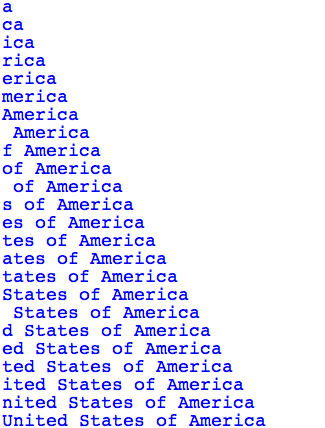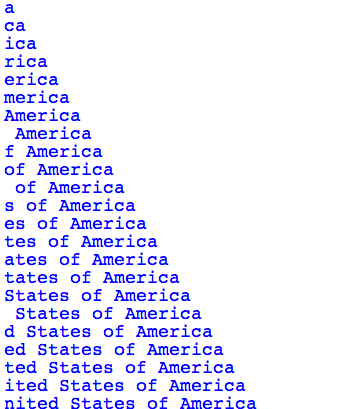Using a Negative Change Value with Range¶
The range(start, end, change) function can have 3 parameters: the start, the end, and the amount to change by. It returns a list that begins with the start value and generates the rest of the list items by adding the change value to the start value. It stops generating the list when the current value is equal or greater than the end value. So the generated list includes the start value and excludes the end value. We have mostly used the range function to create an increasing sequence of numbers like [0, 1, 2, 3, 4, 5]. But, it can also be used to create a decreasing sequence like [5, 4, 3, 2, 1, 0] as shown below. Remember that the second number to the range function says when to stop and that number is not included in the returned list of numbers.
Here’s a program we saw earlier, but with the range function parameters changed to create a decreasing list from the last valid index (the length of the list minus 1) to 0.
- If we started with len(source), we would get an error for indexing past the end of the list
- Right -- the end element is at index len(source)-1
- It is a mistake and should be len(source)
- No -- if accessed len(source) as an index, we would be going past the end of the list
- Because we have -1 in the other two spots
- We have -1 in the end position because we want to stop at zero, and we have an increment of -1 (last position)
csp-16-7-3: Why do we start at len(source)-1 in this program?
Can you figure out what the following program does?
source = "United States of America"
slowly = ""
for index in range(len(source)-1,-1,-1):
slowly = slowly + source[index]
print(slowly)
Try to figure out what the program above does, then try to answer this question.

- This takes letters from the end of the string forward, and adds them to the end

- This one is adding up letters in the forward direction

- This one ends at 0 (or rather, 1)
csp-16-7-4: Which one of these is the output of that program?